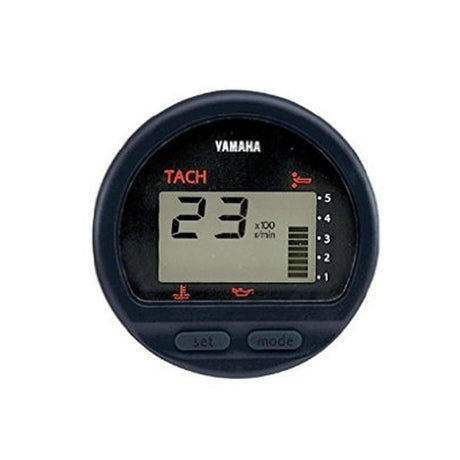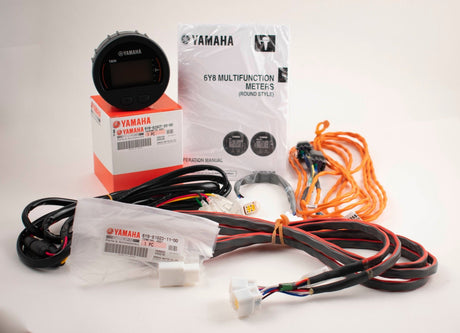-
Yamaha
Yamaha - Digital Multifunction Tachometer - 6Y5-8350T-D0-00 - Supersedes 6Y5-8350T-83-00
$318.18$341.00Unit price /Unavailable -
Yamaha
$390.91$419.00Unit price /Unavailable -
Yamaha
Yamaha Command Link Single Engine Gauge Kit - 6Y8-0E83R-81-00 - Tachometer Only
$416.88$446.00Unit price /Unavailable -
Yamaha
Yamaha - Digital Multifunction Fuel Management Meter - 6Y5-8350F-B0-00
$375.32$402.00Unit price /Unavailable -
-
Yamaha
$2,158.74$2,219.00Unit price /Unavailable -
Yamaha
Yamaha Digital Multifunction Tachometer – 6Y5-8350T-D3-00 - Supersedes 6Y5-8350T-D2-0
$318.18$341.00Unit price /Unavailable -
Yamaha
Yamaha Digital Multifunction Speedometer – 6Y5-83570-A3-00
$390.91$419.00Unit price /Unavailable -
Yamaha
Yamaha - Fuel Management Meter (RND) - 6Y5-8350F-01-00
$375.32$402.00Unit price /Unavailable -
Yamaha
Yamaha - Digital Tachometer Assembly - 6Y5-83500-C9-00
$592.40$608.05Unit price /Unavailable
Not only do these Yamaha Digital Multifunction marine gauges match the modern designs of newer vessels, this equipment also offers significant advantages for those in the marine industry.
Due to their higher price point, digital marine gauges such as aluminum or stainless steel bezels with thick, crack resistant plastic faces. Not only do these premium materials help aid in reducing the normal wear and tear of the digital marine gauge throughout its lifecycle, but they also help protect the internal parts from vigorous mechanical vibration that further accelerate the failure rate in analog gauges. KUS Voltmeter & Fuel Gauge Alongside Tachometer & Garmin GPS. Marine gauges are integral components for any ship or boating vessel. This equipment is the key to monitoring data, such as speed, oil pressure, battery conditions, and much more. Digital gauges can share data across NMEA 2000 networks, so you can see engine information on several multifunction displays. Digital marine gauges either have much less or no moving parts, this reduces the probability of mechanical failure in comparison to a traditional analog gauge which will have at least a moving needle attached to the faceplate if not additional moving parts behind the faceplate that may fail given harsh operating conditions. Digital marine gauges are also more precise than traditional analog gauges. Digital marine gauges typically leverage a transducer that converts variations to be measured into an electrical signal. The electrical signal that is produced is then converted into a numeric value by usage of a microprocessor, which then displays that reading on the faceplate of the gauge. The primary benefit associated with digital marine gauges is that they are typically capable of displaying more thorough real-time network information, including data such as engine output, fluid levels, and speed all in one gauge or interface. These marine gauges simplify boat operation by connecting to digital or CanBUS signals that are used to ensure proper system operations are in order.
Yamaha Digital Multifunction Gauges is a sealed digital wireless marine gauge which replaces up to nine mechanical gauges in marine and boat instrumentation applications.











